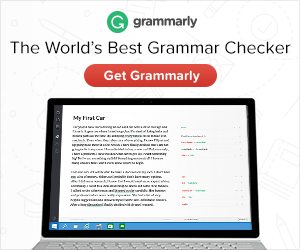Your pricing strategy is essential for two reasons:
First, the difference between your production or purchase price and what you offer customers has a decisive impact on the profitability of your business.
Second, prices affect the demand for what you offer; if they are well tailored, they have the power to attract customers, and conversely, poorly formed prices for good goods can repel customers and threaten your business. That is why the process of creating the correct prices is extremely important for every entrepreneur and should be done professionally.
There is no one tried-and-true strategy that will work for all retailers. You must balance the costs of production and business operations with customer trends, revenue targets, competitive pricing, and even a little psychology, so continue reading to learn about 6 types of retail pricing strategies that can help you!

Manufacturer Suggested Retail Price (MSRP)
Consumers may be most familiar with this price strategy. The Manufacturer Suggested Retail Price (MSRP), which is frequently used for mass-produced items like consumer electronics or home appliances, aims to standardize the costs of goods sold across numerous locations.
The advantage of this strategy is that it saves retailers the time and effort of having to guess when determining prices. That’s good, but you certainly don’t need to completely surrender; you can also use additional intel that will help you be one step ahead because, as the folks at Flintfox say, the “extraordinary” times of the early Covid-19 are now firmly established, but the retail environment is still unstable. Since it considers the cost of producing the goods, a profit margin for the producer and retailer, as well as the costs of comparable products, this strategy is also known as “cost-based pricing.” In most cases, the producer offers the products to the retailer at a price that is around half of the MSRP, allowing the retailer to benefit from the sale.
Keystone Pricing
Markup pricing is a sort of keystone pricing. To generate a healthy profit margin, you use this method to increase the wholesale price of each product by half.
Your computations will be easy with a constant percentage. Perhaps too simple; it’s simple to end up pricing items too high or too low.
You won’t generate enough money using keystone pricing if you sell very distinctive products or custom ones that take a lot of time to build.
If you sell widely used, standardized products, it’s still a subpar pricing approach. It might be inappropriate for a retailer to mark things up at such a high percentage, depending on the availability and demand for an item.
Discount Pricing
Discount pricing is the practice of retailers who mark down the cost of their goods to boost sales.
The high-low pricing strategy is one sort of discount pricing. Products are first offered at a high price point and then marked down when demand declines.
The majority of the time, electronic stores employ this tactic. The most expensive items include computers, video game consoles, and smartphones when they are first introduced. The older models, however, are discounted when the newer models are released.
Penetration Pricing
Another type of discount pricing is penetration pricing. A company lowers the price of a new product or service to draw in customers. The goal is to entice customers with a low price so they will be eager to pay the full price once the campaign has ended.
Competitive Pricing
Setting lower prices voluntarily to obtain a competitive edge is known as competitive pricing. It works best if you’re in a market where there are a lot of comparable products, and the only thing that sets you apart from your rivals is pricing.
The competitive pricing strategy functions best if you’re a larger shop and can negotiate with suppliers for a lower wholesale price while still making a respectable profit. A price battle, though, can force tiny merchants out of business.

Dynamic Pricing
Dynamic pricing refers to a retailer’s pricing approach in which prices are changed in response to variations in supply and demand.
The ability to apply dynamic pricing in real-time makes it ideal for e-commerce companies. When you sell products online, you can use data and technology to sell the same item at various prices based on the buyer.
Software, data, and personnel are all needed for the dynamic pricing strategy. There are several things to think about when deciding on a retailer’s pricing strategy, including the company’s niche, competition, market behavior, and, most crucially, financial targets.
No one price strategy we’ve discussed will be sufficient on its own. To build the best pricing strategy and ensure their business’s success, you need to experiment and combine strategies.





